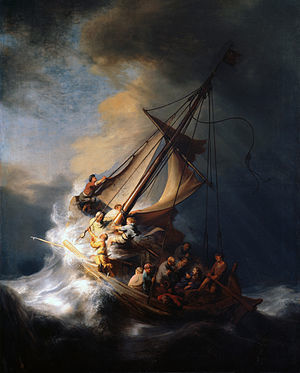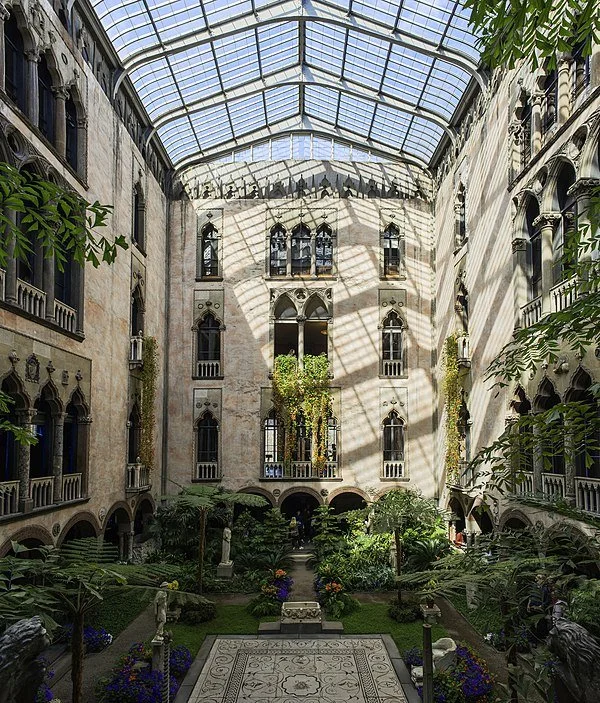 "The Storm on the Sea of Galilee,'' by #rembrandt, one of the works stolen from the Gardner Museum 25 years ago.
"The Storm on the Sea of Galilee,'' by #rembrandt, one of the works stolen from the Gardner Museum 25 years ago.
Twenty-five years ago, in the wee hours after St. Patrick’s Day 1990, thirteen works of art valued at $500 million were stolen from Boston’s Isabella Stewart Gardner Museum. It stands as the biggest art theft in history, and it remains unsolved.
Among the pieces stolen were three Rembrandts, including his only known seascape, “The Storm on the Sea of Galilee,” and Vermeer’s, “The Concert,” and there only 34 Vermeers known to exist.
My immediate thought was: Who would steal art so famous it couldn’t be sold?
Professional art thieves would not waste precious time popping a relatively worthless eagle finial off the top of a flag pole, as they did in the Gardner theft, nor would they pinch a bronze, Shang Dynasty drinking beaker (a Ku), regardless of its value; not when their obvious prizes were the Rembrandts and Vermeer, a Manet and a handful of Degas.
Year after year, I listened as the “experts” rolled out their conventional theories of the crooks having Boston underworld connections, be it Whitey Bulger or any of an assortment of local thugs.
No-no-no!
There is a 600 year old problem-solving principle that has often been employed in science and forensics called Occam’s Razor, and it is extremely applicable in this case: among competing hypotheses the one with the fewest assumptions should be preferred.
The simplest, cleanest theory of this robbery eliminates thugs who wouldn’t be familiar with a precious out-of-the-way museum like the Gardner, who wouldn’t know Manet from mayonnaise. Nor were they sophisticated professionals who would operate swiftly, not spend an hour and twenty-one minutes dancing around a museum in the middle of the night. My theory has the least amount of assumptions, and it begins right across the street from the Gardner at the School of the Museum of Fine Arts. Students from the Museum School, as it’s popularly known, are in and out of the Gardner all the time, studying the art, drawing it.
The guards on the night of the theft were two: a 23-year-old music student at Berklee College of Music and a 25-year-old local musician. The Gardner, the SMFA and Berklee are all within a 10-minute walk of each, two minutes by car.
Is it not possible, if not probable, that art students hanging around a museum and musician-guards would get to know each other, at the museum itself or at clubs and parties?
Weeks prior to the theft, the guards had entertained friends in the museum at night, hanging out drinking, strolling the galleries….
In my view, the theft was committed by students, perhaps in league with former or then-present guards. The theft was a lark, pulled off for the thrill of it.
The big problem: what to do with the art once it was in their possession. My imagination was fired up. In 2006, I set about writing a fictional version of the heist, using all the known facts and cast of characters.
In the spring of 2013, the FBI held a press conference, claiming that they knew who stole the art, they just didn’t know where it was. If the Feds knew who stole the art, why not name them? It could only hasten its recovery. To me, they were obviously bluffing, hoping to flush out someone who had knowledge of the art.
My novel about the heist, Irreplaceable, came out in the summer of 2013. I alerted the staff of the Gardner Museum via email, figuring that they would have a natural interest in the story. The Gardner’s Director of Security, Anthony Amore, replied hot and swift:
“…the claim that the FBI is bluffing is ridiculous and irresponsible. I will not be purchasing it [your book].”
Were she alive today, I believe that the flamboyant, rapacious Isabella Stuart Gardner would pursue the recovery of her art with as much tenacity and imagination as she’d brought to its acquiring. She certainly wouldn’t have tolerated 25 years of theories that have produced nothing.
Inscribed above the museum’s original entrance is her motto: “C’est mon plaisir.” This was a woman who well-understood doing something for the fun of it, and because she could.
Charles Pinning is a Providence-based writer.






















